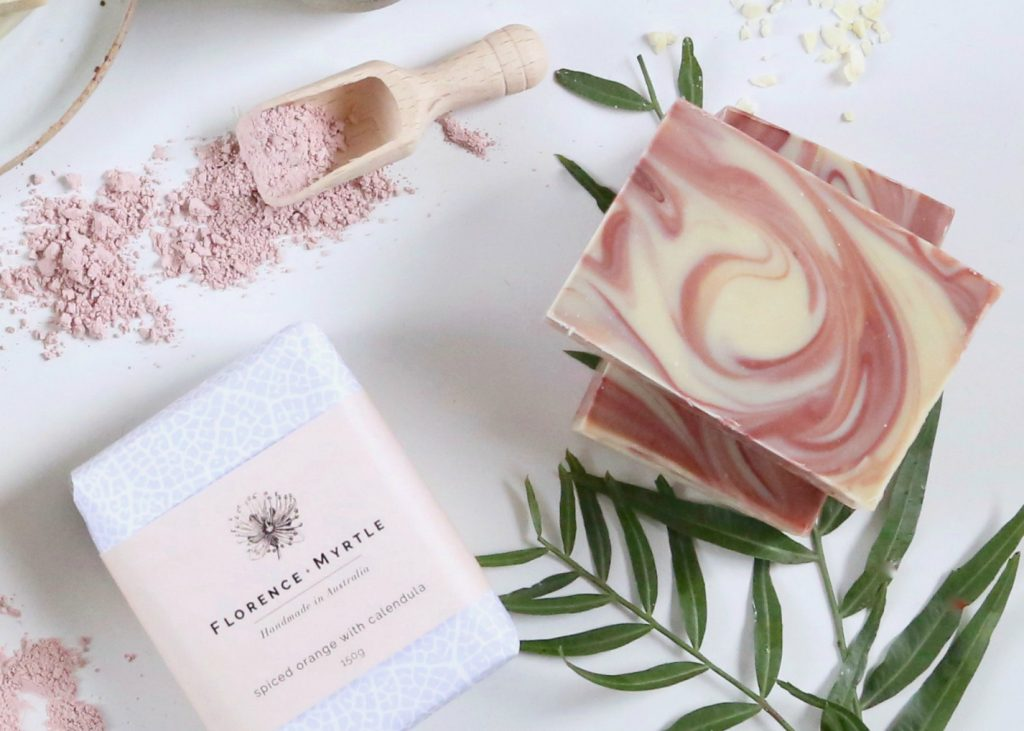Natural color is not the only addition clay endows a soap recipe with. Adding clay to a soap recipe creates bars that leave your skin feeling clean and refreshed. If you have itchy, inflamed skin conditions, try clay soap. It is also very helpful when you have summer heat rashes and bug bites. You can cleanse your acne-prone skin by using clay soap as a complexion bar.

Activated charcoal, unrefined shea butter, clays and there are several other natural ingredients to make clay soap at home. You might already have tried some of the old recipes using the same old pouring method. Let’s try something new. Have you ever tried the funnel pour technique?
Let’s try this. Maybe, this will be the coolest thing you have ever tried in clay soap making. There are a lot more techniques to try. However, let’s see how to make clay soap using the funnel pour technique.
If you are considering the Purple Brazilian Clay, note one thing. The final soap is likely to look more rosy-mauve than purple if you don’t use enough. After trying this recipe, try combining it with alkanet root.
Natural Clay Soap Ingredients
- Avocado oil – 3 ounces
- Coconut oil – 8 ounces
- Olive oil – 12 ounces
- Shea butter – 2 ounces
- Sunflower oil – 6 ounces
- Lye (6% superfat) – 4.3 ounces
- Water or liquid (such as violet tea) – 8 to 12 ounces
If this is the first time you are going to make clay soap, learn as much as you can about the process. Also, be aware of the precautions.
You need a 3-pound wooden mold with inner dimensions of 3.5 inches X 3.5 inches X 8 inches. This recipe yields 7 to 8 bars.
If you are not using essential oils, expect an earthy smell from your clay soap. You can add 15 to 30 ml of peppermint essential oil. This is also good for a refreshing wash.
Before you mix lye solution into the oils, make separate mixtures of the following additions in three separate cups or small bowls:
- Water 2 teaspoons and purple Brazillian clay 1 teaspoon
- Water 2 teaspoons and activated charcoal 1 teaspoon
- Water 2 or 3 teaspoons and bentonite clay – 1 teaspoon
Mix to light trace and divide into three plastic, glass or stainless steel bowls. You can also use leftover yogurt containers.
Add and stir bentonite clay into the first part, the purple clay into the second part and the activated charcoal into the remaining part of the soap mixture. Purple Brazilian clay is not hardwired for this recipe. You can use French green or rose if you want a different color profile.
Now place the funnel over the middle of the mold. Pour each color in for a few seconds, one at a time. Alternate the colors.
Following are the different types of clay you can use:
- Bentonite Clay
- Strong oil-absorbing properties make this clay ideal for oily skin.
- Brazilian Clay (Natural, Pink, Purple, Dark Red, Yellow)
- Contains no dyes or pigments and perfect additive for a variety of skin types.
- French Green Clay
- Excellent oil absorbing properties make it suitable for oily skin and oil absorption in facial masks.
- Green Zeolite Clay
- Larger texture and great absorption properties endow it with gentle exfoliating properties.
- Ideal for almost all skin types.
- Kaolin Clay
- Fine texture makes it suitable for eye shadows, cosmetics, soaps, bath bombs and many other products.
- Rose Clay
- Fine texture makes it ideal for dry skin.
- Sea Clay
Suitable for facial masks to cleanse normal to oily skin types.
You can shop clay for clay soap, unrefined shea butter and all other ingredients online.
